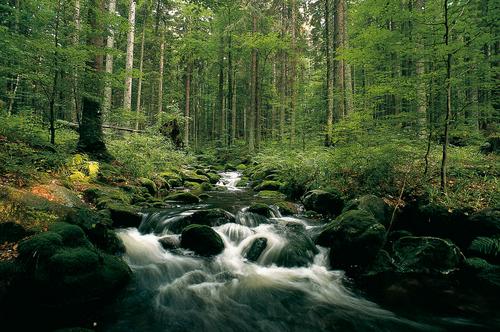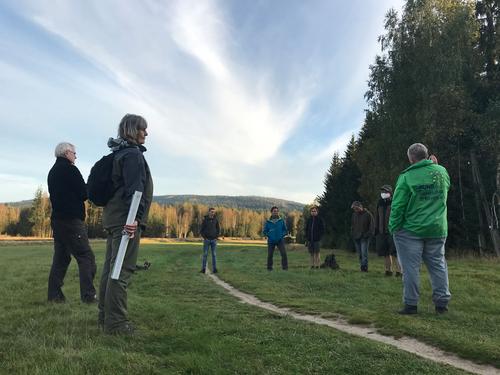++ 30 years since German reunification ++ Conservation of the natural world along the former Iron Curtain as a Central European peace project ++

The Kleine Ohe is one of the numerous streams flowing through the area which spans the mountains of the national parks of the Bavarian and Bohemian Forests (Šumava).
© Heinz Lehmann
Today the former Iron Curtain unites rather than divides conservationists from the Czech Republic and Germany.
© Marcela PovolnaRadolfzell. In celebrating the 30th anniversary of the fall of the Berlin Wall, nature deserves attention, too: The end of the Iron Curtain is at the same time the beginning of one of the continent’s most ambitious nature conservation projects – the European Green Belt. Where barbed wire and shooting devices separated neighbouring European countries for decades, conservationists are now cooperating across borders to preserve Europe’s natural heritage.
The Green Belt in Germany is, however, only part of a much greater network of habitats, the European Green Belt. In the shadow of the Iron Curtain, also along the German-Czech Republic border, it has been possible to preserve valuable wildlife sites. In the context of the annual European Green Belt Days, members of civilian organisations in both the Bavarian and Bohemian Forests National Parks have organised cross-border activities. These have involved not only observations of nature, but also developing strategies for the promotion of bilateral development.
“Cooperation along the German-Czech Republic border is just one example of many. The European Green Belt is a dynamic symbol of European integration. Three decades after the great turning point in European politics, this strip of living nature exemplifies the peaceful cross-border cooperation between previously hostile nations. Our goal is the promotion of sustainable regional development which will at the same time ensure the long-term conservation of a variety of connected habits,” said Laura Meinecke, project leader for the European Green Belt at EuroNatur.
Background information:
- The “European Green Belt” stretches over 12,500 kilometres from the Barents Sea to the Black and Adriatic Seas along the former border between East and West as a corridor of habitats with extraordinary biodiversity. The European Green Belt is an international initiative launched in 2003 by EuroNatur together with the German Federal Agency for Nature Conservation, BUND (Friends of the Earth Germany) and the International Union for Conservation of Nature (IUCN). The Green Belt links eight biogeographical regions and 24 states. EuroNatur is the regional coordinator of the section Balkan Green Belt and chair of the European Green Belt Association e.V. which is supported by governmental and non-governmental organisations across the whole of Europe. Here you can find more information: https://www.europeangreenbelt.org
-
European Green Belt Days: In order to increase the public profile of the European Green Belt, annual European Green Belt Days have been held annually since 2016 in the period 18th – 24th September. During this time, conservationists and ecologists, together with interested members of the public, celebrate the special features of their local Green Belt, and the highlight the work they do there to preserve it.
Press contact: Christian Stielow, Mail: christian.stielow(at)euronatur.org, Tel: +49 (0)7732 927215
Select on which of your areas of interest you would like to receive our press releases.
You can subscribe to our RSS feeds to receive all the news on the topics of your choice.


